The Sopwith T.1 Cuckoo was a British torpedo carrier created by Sopwith, produced by Blakcburn, and operated by Royal Naval Air Service (RNAS), and later the RAF. The T.1 was the first landplane specifically designed for carrier operations and carrying a torpedo, but completed too late for service in the First World War. The T.1 was resptropsctively called Mark I, as a Mark II was produced postwar and both were named the "Cuckoo", possibly because like the bird, it was officially a Sopwith design conceived and produced by Blackburn.
Although this model "did the job" it could never had the chance to perform the carrier attacks planned for late 1918 on Wilhelsmhaven. It still was the first and last such type ever designed by Sopwith and quickstarted the career of Blackburn as main provider of torpedo bombers for the Royal Navy's carriers, the last being the Shark, still in service in WW2 as an alternative to the Swordfish.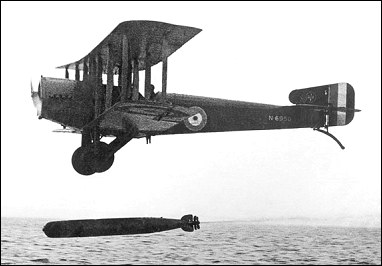 The first torpedo-bomber in service anywhere was the Type C seaplane, albeit the Cuckoo from Sopwith became the world's first of the type with undercarriage, built to operate from the flying-deck of an aircraft-carrier. It was essentially derived from the Sopwith B.1 Bomber, at least in appearance. It was also very much in debt to Blackburn Aeroplane & Motor Co Ltd. for the development of its specialised torpedo gear, and for its large production. Blackburn in short, produced WW1 equivalent of the Fairey Swordfish of the interwar, albeit it arrived too late to see effective service from the deck of HMS Furious and other carriers as expected for the final planned attacks of early 1919.
The first torpedo-bomber in service anywhere was the Type C seaplane, albeit the Cuckoo from Sopwith became the world's first of the type with undercarriage, built to operate from the flying-deck of an aircraft-carrier. It was essentially derived from the Sopwith B.1 Bomber, at least in appearance. It was also very much in debt to Blackburn Aeroplane & Motor Co Ltd. for the development of its specialised torpedo gear, and for its large production. Blackburn in short, produced WW1 equivalent of the Fairey Swordfish of the interwar, albeit it arrived too late to see effective service from the deck of HMS Furious and other carriers as expected for the final planned attacks of early 1919.
In a letter to Tom Sopwith from Commodore Murray Sueter sent in October 1916, her requested a draft and feasibility of torpedo-carrying wheeled undercarriage aeroplane with superior performance and lifting ability and 'probably' catapult-launched. This was not a sudden invantion for the latter, as works has been done in the US back in 1911 when first specified and tested in 1912 when Bureau of Ordnance tested a catapult for launching aeroplanes "somewhat in the manner of launching torpedoes". Sir David Beatty is probably the one closest associated with the development of the Cuckoo, fighting at Jutland in 1916 and later succeeded by Lord Jellicoe her was "demoted" to guard the shores of Britain. He looked at way of a quicker way to deter German raids like those of 1914-15 and how apart the Harwich flotilla, Scapa Flow had been each time too slow to arrive in time. Torpedo carrying aeroplanes seemed a solution.
Work was done already at Short for such "universal" heavy load seaplane, the Short 184 first deployed in 1915, tested with a light torpedo, and first to effectively sink an enemy ship at the famous battle in May 1916 by an airbone Torpedo attack. Beatty was aware of this attack and pressed for the formation of seaplane squadrons in shore bases that could be airborne at a moment's notice and caught the withdrawing battlecruisers, perhaps scatter these and damage, slow them enough for the "big boys" to catch up. And to the real damage.
'Rutland of Jutland' (Flight Commander Rutland) was another important proponent for the new type of aircraft. He knew and flew the Pup and argued that wheeled undercarriage models were just far more efficient in performances than seaplanes, with the drag caused by their floats. He expressed his faith in ship-borne torpedo-dropping aircraft and drew a proposal associated with Admiral Sir Herbert Richmond. By late 1917 Beatty brought the admiralty attention to the Richmond/Rutland proposal relating to a torpedo aircraft attack on the German High Seas Fleet in the Wilhelmshaven area, so an active rather than purely defensive use, and given theor range at the time, an attack led from the first aircraft carrier worked out by Britain at the time, HMS Furious. This kind of assault was envsioned for the Spring of 1918, and he proposed to gain time the conversion of eight specially adapted merchant ships with a fll lenght deck, since he feared the Admiralty would be weary to leave any of its precious ships for such conversion.
powered by a 200 hp Hispano-Suiza the Sopwith T.1 was a first attempt, with a span of 46 ft 9 in (14.2 m), length 28 ft 6 in (8.7 m) and wing area of 566 sq ft (52.6 sq m). Empty weight 1.840 lb (835 kg), with a maximum weight of 3,370 lb (1,529 kg), a top speed at 10.000 ft (3,050 m) of 100 mph (160 km/h) and climb rate to 6,500 ft (1,980 m) of 14.5 minutes, and to 10,000 ft (3,050 m) of 26 min, plus a range 420 miles (676 km) without payload. it should be noted that untlike the T.1, the B.1 also powered by the same 200 hp (149 kW) Hispano-Suiza 8 engine was never produced. Only two prototypes were ever built.
The first T.1 was cleared for flight-testing on 6 June, 1917, quickly sent for official trials at the Isle of Grain, powered by the 200 hp water-cooled V8 Hispano-Suiza, already and tested on the B.1 Bomber with a circular frontal radiator. Its high-set propeller was associated with a reduction gearing, especially desirable when lifting a torpedo and this may have been a factor in granting the Licence No.6 to produce both the B.1 and T.1 at the same time. Tests of the T.1 at the Isle of Grain in July 1917 proved successful, followed by an order for 100 machines placed on 16 August, 1917 at Fairfield Shipbuilding and Engineering Co. Ltd. of Glasgow. This was a company however inexperienced in aircraft construction but skilled in fast ships, torpedo boats and destroyers. The T.1 was to be equipped with an earlier Whitehead torpedo. It was light, but had a limited range, payload, and was slow.
Sir Hiram Maxim, the inventor of the famous "first" machine gun bearing his name, now a billionaire, was asked by Scottish engineer Bryce Douglas, visiting his workshop at Hatton Garden, to design a large gun for throwing such model, and accelerate it enough to threat a ship underway. Which Maxim did. The drawings were reviewed in Glasgow by Bryce Douglas acting as Chief Engineer at Fairfield, and approved these, then made a model of the "torpedo gun". He also coined the term of "aerial torpedo" and the final model was designed to be tested in the highly secret. However eventually the combined weigh of the gun and torpedo that would be realstically large enough to do any significant damage was cancelled for the simpler fropping method, providing a better aerial torpedo could be designed in the meantime.
The main difference of the T.1 and the B.1 was in the way were fitted the three-bay wings instead of two-bay for a greater span and area and even providing wing-folding arrangements, placed at the innermost set of interplane struts for the split. They also had a special landing gear compatible with the loading of a torpedo underbelly, wo no inter train strut. The outermost attachment-points for this landing gear being being relocated near the wing-fold point whereas the cockpit was pushed further aft at the hight of the trailing edges of the unstaggered wings. The torpedo being heavier, the load balance was changed further forward. It was soon worked out the torpedo could never be carried internally.
The pilot's view was however not being worked out at that stage and when tried, proved not ideal for the task given the nose, which both blocked view of the target and empeded as well carrier operations. At least the T.1 would have a better upward view compared to the B.1 to foil attacks from above. The N74 had new structural features and its wooden framework was braced by steel wire, covered with fabric, except for cockpit section forward in rolled metal sheets. In addition, the first model experienced scores of undercarriage and tailskid failures, requiring redesign. They had a tendency to swing to the right and required an enlarged rudder and new vertical stabilizer as well.
After initial trials at the Isle of Grain, N74 was returned to Sopwith for corrections and fixes, then sent back to Grain for further tests and carry heavier weights from January 1918. But for possible production it was realized the Hispano-Suiza engine was much in demand for the S.E.5a at the time as well in the Bristol Fighter and the ministrry pointed out instead the Sunbeam Arab being available. Sunbeam provided already a sturdy engine for the Short 225 and 320, both tested with torpedoes. This became the new engine chosen for the Sopwith T.1. It diverged by its bore and stroke of 120 mm x 130 mm and geared in direct-drive, associated with a redesigned frontal radiator following the same arrangement as in the Bristol Scout F but in inverted-horseshoe.
In February 1918 just when trtials were started of a N74 fitted with a Sunbeam Arab by Blackburn, the order amounted to 230 T.1 from Blackburn and 50 more from Pegler & Co Ltd. of Doncaster. Like Fairfield the latter was inexperienced in aircraft construction, so much so later Blackburn took over the contract. Blackbuirn managed to deliver these T.1 in quantity with deliveries starting from May 1918, Fairfield creating a single model in September and Pegler in October. When the Armistice came on 11 November, 1918, orders totalled 350 but so far just 90 had been delivered, 80 by Blackburn alone, but the order was still recalled and cancelled, albeit 230 were still delivered after the armistice, to equip at least a few squadrons to evaluate the idea, from shore and the new carriers in development, such as HMS Hermes and Argus (see later).
The final model was called the 18-inches Mk.IX torpedo, nominally 1,000 lb, but in reality close to 1,100lb. It was still a special lightweight, short pattern Whitehead already deployed on many ships before the caliber rose to 21 inches. MTBs for example used this model still in 1918 as well as many former destroyers used as TBs. It was however tailored to be carried at altitude where all mechanismm can freeze. It included an improved version of the heater and engine from the VI*** H torpedo, B2 design. It measured 12 feet, 10 inches inches overall (3.95 m) for an exact 996 pounds and still topped by a 170 pound Amatol warhead. crucially, this model could run at 29 knots over 2,000 yards. It hd a 45.5 Ib. buoyancy, 16 empty with 39 air, 18.9 water, 2.1 fuel in proportions. The engine procured 5 cubic feet at 1,500 psi. In 1918 the new "B" warhead appeared, 250 Ib instead of 170 Ib. and was adopted.
The torpedo was carried by a large inverted-pyramid pylon structure which helped steady the torpedo in flight and topped its nose as pistol-stop, connected to a steel crutch, or pair of semi-circular ones and a flexible sling for release. Its sight was a small ring near the pilot's eye both present port and starboard while a transverse row of beads could be setup to calculate the dropping time if the target was moving at 5, 10, 15 knots+. However these niceties were not the main concern for pilots already hard pressed to take-off from a carrier at all, as the Cuckoo would enjoyed a bad rep while ditching a lot.
The final airframe had an adjustable tailplane as standard with the tail plane receiving two Bracing Wires extended from the Bottom Longerons to the forward and aft spars and on the upper surface by two Bracing Wires extending from the Fin to the froward and rear spars. The tail Plane was fully adjustable, set at zero Angle for trials. The rear spar had a vertical telescopic fitting fixed in the Fuselage close to the sternpost. It had an inner screwed spindle elevated via a sprocket wheel in the Cockpit while its cable passed round a drum on the spindle. The front Spar was hinged though a cylindrical casting with bronze bearings bolted to the top transverse Strut.
The four ailerons were operated by a wheel on the control column though control-cable arrangements, all external. There was a relatively large tailskid, made even taller for production models. The landing gear was modified and heavy duty for rough landings (excluding returning back with a torpedo !) but its steel-tube components were prone to fracture. It was made of steel tubes welded and pinned together with a V arrangement parallel to the fuselage, bolted end Lugs to the front and rear Spars of the lower Plane frame. The were shock Absorbers. The Steel Struts were all streamlined, covered by wood fairing attached by metal clips, wrapped with doped fabric. The three-bay folding wing was peculiar due to the folding arrangement but its structure was very much the same construction as the B.1.
Indeed performance of the Mk.II with all the additions asked for by the Navy made it performing quite poorly, and even degraded compared to the Mk.I. Tests later with the Rolls-Royce Falcon in 1919, were also disappointing but possibly due to the use of a four bladed propeller from the Bristol Fighter. The Mark II weight was increased to 4,350 lb (1.970 kg), although this was 2,000 lb (910 kg) less than the Blackburn Dart powered by a Napier Lion.
By the Summer of 1918 the first Blackburn-built T.1 ended at the Torpedo Aeroplane School to form pilots at East Fortune (near Dunbar, North Berwick in Scotland). Pilots trained within an operational squadron to the difficult tasks at hand, not even from a carrier deck and joined the Fleet on 7 October, 1918. Only on 19 October the first arrived on HMS Argus (recently converted, former liner Conte Rosso). These were its first air group, alongside Camel 2F1 fighters and Short 184 for reconnaissance. In December 1918 preparations were made to have them onboard the carrier Furious, rebuilt agaion, and eventually HMS Eagle when converted years later. The type equipped thus for a time the 185, 186 and 210 Squadrons RAF, basically used to create the basis of tactics related to torpedo-carrying/dropping aicraft at Gosport near HMS Vernon torpedo school. No.210 Squadron was disbanded in April 1923 when the Cuckoo was declared obsolete even for coast defence.
The model however made another surprising contribution... In 1921 six Mark II (Viper engine) were sent to Japan by a British Air Mission to the Imperial Japanese Navy. At the time, Japan was an ally of Great Britain since 1903 and was very active against the German Navy in Asia in 1914, even sending destroyers to help out the entente in the Mediterranean. The Mission was led by Colonel Sempill, in the RFC from 1914 and transferred to the RNAS and assisting in the creation of the Sopwith Gun Bus. In Japan, he arrived with former Sopwith designer Herbert Smith. Her arrived with a variety of models, included the six Cuckoo Mark II which made quite an impression on the IJN staff.
The mission thus worked on the Mitsubishi Navy Type 10 (1MT1) adopted as standard carrier-borne torpedo-bomber, for its first carrier, the Hosho and very much inspired by the Cuckoo. It was a triplane whioch first flew with former Camel pilot Capt. W. L. Jordan in August 1922. Twenty were built, powered with the Napier Lion engine. Another Cuckoo style model was Smith's Navy Type 13 (B1M) completed in 1923 and used a long time by the Japanese, judged well superior to the mediocre 1MT1. For all its contribition to the name, Sopwith only made the sole N74.
The final "torpedo bomber" type was not invented by the Cuckoo as the first type uniting both role and capable of cerrying either a torpedo or a bomb-load would be the Blackburn Dart which, a single-seater like the Cuckoo and active in the RAF from 1922 to 1933. The next step would be to design longer range models, and thus to include a navigator to help findind back the carrier, and lastly, a defensive machine gunner. Both were also supposed to help in the torpedo release, the pilot being relegated to its basic work. Strangely, the return to single seat torpedo bombers was -again- met postwar with 1944-45 requirements for "universal" carrier models that could act as attack and fighter models as well. This last gasp of the type was signed by no other than Blackburn again, with models such as the Firebrand. The thinking was that the speed and agility of the latter could help to evade any fighter, which was very much the same thiking which went into the Cuckoo and the Dart, good manoeuvrability after release of the torpedo and structural strength for undertaking evasive action coppensating for the absence of a defensive armament.
Davis, Mick. Sopwith Aircraft. Ramsbury, Marlborough, Wiltshire: Crowood Press, 1999.
Layman, R. D. Naval Aviation In The First World War: Its Impact And Influence. London: Caxton, 2002.
Robertson, Bruce. Sopwith – The Man and His Aircraft. London: Harleyford, 1970.
Thetford, Owen. British Naval Aircraft Since 1912. London: Putnam, 1994..
avionslegendaires.net
en.wikipedia.org
flyingmachines.ru
jnpassieux.fr
airwar.ru
aviastar.org
militaryfactory.com/
tangmere-museum.org.uk
Colin Owers - Great War Aviation Centennial Series Nr. 57, vol.3 Sopwith Cuckoo
Although this model "did the job" it could never had the chance to perform the carrier attacks planned for late 1918 on Wilhelsmhaven. It still was the first and last such type ever designed by Sopwith and quickstarted the career of Blackburn as main provider of torpedo bombers for the Royal Navy's carriers, the last being the Shark, still in service in WW2 as an alternative to the Swordfish.
The Sopwith Cuckoo: The first carrier borne torpedo carrier
 The first torpedo-bomber in service anywhere was the Type C seaplane, albeit the Cuckoo from Sopwith became the world's first of the type with undercarriage, built to operate from the flying-deck of an aircraft-carrier. It was essentially derived from the Sopwith B.1 Bomber, at least in appearance. It was also very much in debt to Blackburn Aeroplane & Motor Co Ltd. for the development of its specialised torpedo gear, and for its large production. Blackburn in short, produced WW1 equivalent of the Fairey Swordfish of the interwar, albeit it arrived too late to see effective service from the deck of HMS Furious and other carriers as expected for the final planned attacks of early 1919.
The first torpedo-bomber in service anywhere was the Type C seaplane, albeit the Cuckoo from Sopwith became the world's first of the type with undercarriage, built to operate from the flying-deck of an aircraft-carrier. It was essentially derived from the Sopwith B.1 Bomber, at least in appearance. It was also very much in debt to Blackburn Aeroplane & Motor Co Ltd. for the development of its specialised torpedo gear, and for its large production. Blackburn in short, produced WW1 equivalent of the Fairey Swordfish of the interwar, albeit it arrived too late to see effective service from the deck of HMS Furious and other carriers as expected for the final planned attacks of early 1919.
Origin and Development
The relationship between the B.1 Bomber and the Sopwith T.1 was evident in a rendering in ealy 1918 when called 'Sopwith Torpedo Plane (200 h.p. Sunbeam Arab) (T.1)' (not yet "cuckoo". Its first connection with the Blackburn went down to the general purpose seaplane design of 1915-16. The twin-engined seaplane was not designed for, but revealed apt to carry a light torpedo as the company firm gained experience in fitting, and dropping various payloads. The title of "First torpedo-bomber in the world, built to operate from flying-deck of an aircraft-carrier" had in reality a more ancient origin at least in concept. The idea was expressed by Frenchman Clement Ader in 1909 (a pioneer, which notably invented the term "avion") already:Air is everywhere. We know how aeroplanes have to land on the ground. And on the sea? The ever-increasing power of the navy, the possibility of having to fight a battleship, make the problem apparently impossible to solve. However, if we do not hope to succeed in sinking a battleship straight away, we think it will be possible to damage it considerably at the first hit and even to sink it if attacked by a sufficient number of aeroplanes. We foresee... the use of the big torpedo of 100 to 200 kilos; but now we must work out how to use it against warships. If we had to attack an enemy squadron in French or allied waters within proximity of land, the operation would be easy, aeroplanes could land and load their torpedoes on areas near the coast. It would be different in the middle of the sea. Therefore, an aeroplane-carrying ship becomes indispensible.Ader's "torpedoes" were way too light to correspond to any model produced at the time, but perhaps instead to their explosive payload or some sort of depht charge, "making it possible to explode underwater at various depths". Ader had in 1909 the vision of what an aircraft-carrier might be and operate, and the type of aircraft to be designed for it, much like the Sopwith Cuckoo, whereas admitting it was still a difficult proposition. We just have to think about the limitation of payloads of aicraft back in 1909 as they barely were able to take off themselves, let alone to carry anything heavier than a passenger. The british already looked at the concept back in 1914 with Type C floatplane, and draw in the work of Italian aviation pioneer Guidoni in 1912, performing the first experimental torpedo-dropping work, and pinting at a twin engine, twin floatplane as an ideal solution at the time.
In a letter to Tom Sopwith from Commodore Murray Sueter sent in October 1916, her requested a draft and feasibility of torpedo-carrying wheeled undercarriage aeroplane with superior performance and lifting ability and 'probably' catapult-launched. This was not a sudden invantion for the latter, as works has been done in the US back in 1911 when first specified and tested in 1912 when Bureau of Ordnance tested a catapult for launching aeroplanes "somewhat in the manner of launching torpedoes". Sir David Beatty is probably the one closest associated with the development of the Cuckoo, fighting at Jutland in 1916 and later succeeded by Lord Jellicoe her was "demoted" to guard the shores of Britain. He looked at way of a quicker way to deter German raids like those of 1914-15 and how apart the Harwich flotilla, Scapa Flow had been each time too slow to arrive in time. Torpedo carrying aeroplanes seemed a solution.
Work was done already at Short for such "universal" heavy load seaplane, the Short 184 first deployed in 1915, tested with a light torpedo, and first to effectively sink an enemy ship at the famous battle in May 1916 by an airbone Torpedo attack. Beatty was aware of this attack and pressed for the formation of seaplane squadrons in shore bases that could be airborne at a moment's notice and caught the withdrawing battlecruisers, perhaps scatter these and damage, slow them enough for the "big boys" to catch up. And to the real damage.
'Rutland of Jutland' (Flight Commander Rutland) was another important proponent for the new type of aircraft. He knew and flew the Pup and argued that wheeled undercarriage models were just far more efficient in performances than seaplanes, with the drag caused by their floats. He expressed his faith in ship-borne torpedo-dropping aircraft and drew a proposal associated with Admiral Sir Herbert Richmond. By late 1917 Beatty brought the admiralty attention to the Richmond/Rutland proposal relating to a torpedo aircraft attack on the German High Seas Fleet in the Wilhelmshaven area, so an active rather than purely defensive use, and given theor range at the time, an attack led from the first aircraft carrier worked out by Britain at the time, HMS Furious. This kind of assault was envsioned for the Spring of 1918, and he proposed to gain time the conversion of eight specially adapted merchant ships with a fll lenght deck, since he feared the Admiralty would be weary to leave any of its precious ships for such conversion.
The T.1 Torpedo Plane (N74)

powered by a 200 hp Hispano-Suiza the Sopwith T.1 was a first attempt, with a span of 46 ft 9 in (14.2 m), length 28 ft 6 in (8.7 m) and wing area of 566 sq ft (52.6 sq m). Empty weight 1.840 lb (835 kg), with a maximum weight of 3,370 lb (1,529 kg), a top speed at 10.000 ft (3,050 m) of 100 mph (160 km/h) and climb rate to 6,500 ft (1,980 m) of 14.5 minutes, and to 10,000 ft (3,050 m) of 26 min, plus a range 420 miles (676 km) without payload. it should be noted that untlike the T.1, the B.1 also powered by the same 200 hp (149 kW) Hispano-Suiza 8 engine was never produced. Only two prototypes were ever built.
The first T.1 was cleared for flight-testing on 6 June, 1917, quickly sent for official trials at the Isle of Grain, powered by the 200 hp water-cooled V8 Hispano-Suiza, already and tested on the B.1 Bomber with a circular frontal radiator. Its high-set propeller was associated with a reduction gearing, especially desirable when lifting a torpedo and this may have been a factor in granting the Licence No.6 to produce both the B.1 and T.1 at the same time. Tests of the T.1 at the Isle of Grain in July 1917 proved successful, followed by an order for 100 machines placed on 16 August, 1917 at Fairfield Shipbuilding and Engineering Co. Ltd. of Glasgow. This was a company however inexperienced in aircraft construction but skilled in fast ships, torpedo boats and destroyers. The T.1 was to be equipped with an earlier Whitehead torpedo. It was light, but had a limited range, payload, and was slow.
Sir Hiram Maxim, the inventor of the famous "first" machine gun bearing his name, now a billionaire, was asked by Scottish engineer Bryce Douglas, visiting his workshop at Hatton Garden, to design a large gun for throwing such model, and accelerate it enough to threat a ship underway. Which Maxim did. The drawings were reviewed in Glasgow by Bryce Douglas acting as Chief Engineer at Fairfield, and approved these, then made a model of the "torpedo gun". He also coined the term of "aerial torpedo" and the final model was designed to be tested in the highly secret. However eventually the combined weigh of the gun and torpedo that would be realstically large enough to do any significant damage was cancelled for the simpler fropping method, providing a better aerial torpedo could be designed in the meantime.
The main difference of the T.1 and the B.1 was in the way were fitted the three-bay wings instead of two-bay for a greater span and area and even providing wing-folding arrangements, placed at the innermost set of interplane struts for the split. They also had a special landing gear compatible with the loading of a torpedo underbelly, wo no inter train strut. The outermost attachment-points for this landing gear being being relocated near the wing-fold point whereas the cockpit was pushed further aft at the hight of the trailing edges of the unstaggered wings. The torpedo being heavier, the load balance was changed further forward. It was soon worked out the torpedo could never be carried internally.
The pilot's view was however not being worked out at that stage and when tried, proved not ideal for the task given the nose, which both blocked view of the target and empeded as well carrier operations. At least the T.1 would have a better upward view compared to the B.1 to foil attacks from above. The N74 had new structural features and its wooden framework was braced by steel wire, covered with fabric, except for cockpit section forward in rolled metal sheets. In addition, the first model experienced scores of undercarriage and tailskid failures, requiring redesign. They had a tendency to swing to the right and required an enlarged rudder and new vertical stabilizer as well.
After initial trials at the Isle of Grain, N74 was returned to Sopwith for corrections and fixes, then sent back to Grain for further tests and carry heavier weights from January 1918. But for possible production it was realized the Hispano-Suiza engine was much in demand for the S.E.5a at the time as well in the Bristol Fighter and the ministrry pointed out instead the Sunbeam Arab being available. Sunbeam provided already a sturdy engine for the Short 225 and 320, both tested with torpedoes. This became the new engine chosen for the Sopwith T.1. It diverged by its bore and stroke of 120 mm x 130 mm and geared in direct-drive, associated with a redesigned frontal radiator following the same arrangement as in the Bristol Scout F but in inverted-horseshoe.
In February 1918 just when trtials were started of a N74 fitted with a Sunbeam Arab by Blackburn, the order amounted to 230 T.1 from Blackburn and 50 more from Pegler & Co Ltd. of Doncaster. Like Fairfield the latter was inexperienced in aircraft construction, so much so later Blackburn took over the contract. Blackbuirn managed to deliver these T.1 in quantity with deliveries starting from May 1918, Fairfield creating a single model in September and Pegler in October. When the Armistice came on 11 November, 1918, orders totalled 350 but so far just 90 had been delivered, 80 by Blackburn alone, but the order was still recalled and cancelled, albeit 230 were still delivered after the armistice, to equip at least a few squadrons to evaluate the idea, from shore and the new carriers in development, such as HMS Hermes and Argus (see later).
The torpedo issue
The Sopwith Cuckoo was indeed produced by Blackburn, tested and found satisfactory for its aerial caracteristics, even tested able to carry a payload heavy enough to mimick a torpedo, and one available earlier model for drop tests in 1918. But work on the aerial torpedo was eventually displaced from fairfield to Blackburn assisted by experts from the R.N.A.S. They designed a new torpedo-dropping and aiming gear. To perform somewhat stealthier attacks, they also reworked the exhaust silencing and created a warming gear to prevent freezing-up the torpedo attachments. The task was accomplished and the model develop also went on the the Blackburn Blackburd and Kingfisher after 1919. This was first step into a mst successful lineage, later to be contested by Fairey, with Blackbrn providing the RNAS and later RAF with the Dart, Ripon, Baffin, Shark, Firebrand and Buccaneer.The final model was called the 18-inches Mk.IX torpedo, nominally 1,000 lb, but in reality close to 1,100lb. It was still a special lightweight, short pattern Whitehead already deployed on many ships before the caliber rose to 21 inches. MTBs for example used this model still in 1918 as well as many former destroyers used as TBs. It was however tailored to be carried at altitude where all mechanismm can freeze. It included an improved version of the heater and engine from the VI*** H torpedo, B2 design. It measured 12 feet, 10 inches inches overall (3.95 m) for an exact 996 pounds and still topped by a 170 pound Amatol warhead. crucially, this model could run at 29 knots over 2,000 yards. It hd a 45.5 Ib. buoyancy, 16 empty with 39 air, 18.9 water, 2.1 fuel in proportions. The engine procured 5 cubic feet at 1,500 psi. In 1918 the new "B" warhead appeared, 250 Ib instead of 170 Ib. and was adopted.
The torpedo was carried by a large inverted-pyramid pylon structure which helped steady the torpedo in flight and topped its nose as pistol-stop, connected to a steel crutch, or pair of semi-circular ones and a flexible sling for release. Its sight was a small ring near the pilot's eye both present port and starboard while a transverse row of beads could be setup to calculate the dropping time if the target was moving at 5, 10, 15 knots+. However these niceties were not the main concern for pilots already hard pressed to take-off from a carrier at all, as the Cuckoo would enjoyed a bad rep while ditching a lot.
Detailed Design
The final model was the Cuckoo Mk.I powered by the Sunbeam Arab and after its installation by Blackburn, further tests at the Isle of Grain, carrying a dummy deck and measuring apparatus, success was there, apart shearing of a propeller shaft while carrying an under-fuselage water filled container in place of a torpedo). Modifications to the Sunbeam Arab engine, prone to vibrations was however compounded with a produciton which fell behind schedule. It was also heavier than the Hispano-Suiza so the tail needed adjustments to compensate. The difference was 530 versus 500 lb. Only engine-bearers had to be reinforced. But there were many prerfomance variables coming from the radiator and propeller or the torpedo gear.The final airframe had an adjustable tailplane as standard with the tail plane receiving two Bracing Wires extended from the Bottom Longerons to the forward and aft spars and on the upper surface by two Bracing Wires extending from the Fin to the froward and rear spars. The tail Plane was fully adjustable, set at zero Angle for trials. The rear spar had a vertical telescopic fitting fixed in the Fuselage close to the sternpost. It had an inner screwed spindle elevated via a sprocket wheel in the Cockpit while its cable passed round a drum on the spindle. The front Spar was hinged though a cylindrical casting with bronze bearings bolted to the top transverse Strut.
The four ailerons were operated by a wheel on the control column though control-cable arrangements, all external. There was a relatively large tailskid, made even taller for production models. The landing gear was modified and heavy duty for rough landings (excluding returning back with a torpedo !) but its steel-tube components were prone to fracture. It was made of steel tubes welded and pinned together with a V arrangement parallel to the fuselage, bolted end Lugs to the front and rear Spars of the lower Plane frame. The were shock Absorbers. The Steel Struts were all streamlined, covered by wood fairing attached by metal clips, wrapped with doped fabric. The three-bay folding wing was peculiar due to the folding arrangement but its structure was very much the same construction as the B.1.
Further developments
Cuckoo Mk. II
Post-Armistice T.1 repowered were named Cuckoo Mk. II, whereas the Sunbeam Arab version were retrospectively named Cuckoo Mk. I. The Mark II was improved all around, and comprised a new engine, the Wolseley Viper rated for 200 hp (149 kW). It also included flotation bags and an even larger rudder, a new, extra-large tailskid, and torpedo-warming exhaust tailpipes now relocated beneath the fuselage, plus a new folding pistol-stop for the torpedo. In fact with all these additions without power compensation made these models sluggish and pilots were instructed to take off with half-empty petrol tanks to compensate. This did not improved the general opinion about this model...Indeed performance of the Mk.II with all the additions asked for by the Navy made it performing quite poorly, and even degraded compared to the Mk.I. Tests later with the Rolls-Royce Falcon in 1919, were also disappointing but possibly due to the use of a four bladed propeller from the Bristol Fighter. The Mark II weight was increased to 4,350 lb (1.970 kg), although this was 2,000 lb (910 kg) less than the Blackburn Dart powered by a Napier Lion.
Cuckoo Mk. III
A single prototype powered by a V12 275 hp (205 kW) Rolls-Royce Falcon III engine. It was fitted in N7990 in 1919 and properly tested by April 1923 on the Cuckoo, creating another Mark. However at the hefty 700 lb (317 kg) it posed a number of new problems that were not worth the redesign as already new torpeod bomber models were coming out. Production was never approved.⚙ Sopwith Cuckoo Mk.I specs. | |
| Empty Weight | 2,199 lb (993 kg) |
| Gross weight | 3,883 lb (1,761 kg) |
| Length | Length 28 ft 6 in (8.7 m) |
| Wingspan | 45 ft 9 in (13.9 m) |
| Height | 10 ft 8 in (3.25 m) |
| Wing Area | 566 sq ft (52.6 m2) |
| Engine | Sunbeam Arab V-8 water-cooled piston engine, 200 hp (150 kW) |
| Propeller | Wooden 2-bladed fixed-pitch propeller |
| Top Speed | 103.5 mph (166 km/h) at 2,000 ft (610 m), 98 mph (157 km/h)/10,000 ft (3.050 m) |
| Range/Autonomy | 335 mi (539 km, 291 nmi), 4h |
| Climb Rate | 200 ft (610 m) in 4 min; 10.000 ft (3.050 m) in 31 min |
| Ceiling | 12.100 ft (3.960 m) |
| Armament | 18 inch Mk.IX torpedo |
| Crew | 1 pilot |
A short Operational Life
When, the T.1 emerged from its secret status and was given publicity in the press, it was taunted as "a type designed to replace destroyers and submarines". Despite the Armistice, came ou it was still estimated to have rendered brilliant service and tha its career has only begun. The Cuckoo was indeed the starting point of a long line of carrier-borne torpedo-bombers for the Navies that had aircraft carriers in the interwar, namely Britain, the US and Japan, but also France. The T.1, or Cuckoo was just the result of not enough drive behind the initial idea expressed in 1916 at Jutland, with a development slowly starting by late-1916 and thus never operational until two years later in three squadrons (see later).By the Summer of 1918 the first Blackburn-built T.1 ended at the Torpedo Aeroplane School to form pilots at East Fortune (near Dunbar, North Berwick in Scotland). Pilots trained within an operational squadron to the difficult tasks at hand, not even from a carrier deck and joined the Fleet on 7 October, 1918. Only on 19 October the first arrived on HMS Argus (recently converted, former liner Conte Rosso). These were its first air group, alongside Camel 2F1 fighters and Short 184 for reconnaissance. In December 1918 preparations were made to have them onboard the carrier Furious, rebuilt agaion, and eventually HMS Eagle when converted years later. The type equipped thus for a time the 185, 186 and 210 Squadrons RAF, basically used to create the basis of tactics related to torpedo-carrying/dropping aicraft at Gosport near HMS Vernon torpedo school. No.210 Squadron was disbanded in April 1923 when the Cuckoo was declared obsolete even for coast defence.
The model however made another surprising contribution... In 1921 six Mark II (Viper engine) were sent to Japan by a British Air Mission to the Imperial Japanese Navy. At the time, Japan was an ally of Great Britain since 1903 and was very active against the German Navy in Asia in 1914, even sending destroyers to help out the entente in the Mediterranean. The Mission was led by Colonel Sempill, in the RFC from 1914 and transferred to the RNAS and assisting in the creation of the Sopwith Gun Bus. In Japan, he arrived with former Sopwith designer Herbert Smith. Her arrived with a variety of models, included the six Cuckoo Mark II which made quite an impression on the IJN staff.
The mission thus worked on the Mitsubishi Navy Type 10 (1MT1) adopted as standard carrier-borne torpedo-bomber, for its first carrier, the Hosho and very much inspired by the Cuckoo. It was a triplane whioch first flew with former Camel pilot Capt. W. L. Jordan in August 1922. Twenty were built, powered with the Napier Lion engine. Another Cuckoo style model was Smith's Navy Type 13 (B1M) completed in 1923 and used a long time by the Japanese, judged well superior to the mediocre 1MT1. For all its contribition to the name, Sopwith only made the sole N74.
Legacy
The aircraft-carrier HMS Argus was the world's first carrier to have a squadron of "torpedo bombers". But by June 1917 the closely related B.1 Bomber was delivered to Dunkirk for Service trials for the complementary use of bombs and torpedoes on an enemy fleet and seems to fit better the Navy. The T.1 was not even designed as a primary deck-landing 'torpedo-bomber' but a "torpedo carrier" only, and the two types were seemingly able to act from shore bases for coastal defence in an early phase, then posted on carriers for punctual offensives.The final "torpedo bomber" type was not invented by the Cuckoo as the first type uniting both role and capable of cerrying either a torpedo or a bomb-load would be the Blackburn Dart which, a single-seater like the Cuckoo and active in the RAF from 1922 to 1933. The next step would be to design longer range models, and thus to include a navigator to help findind back the carrier, and lastly, a defensive machine gunner. Both were also supposed to help in the torpedo release, the pilot being relegated to its basic work. Strangely, the return to single seat torpedo bombers was -again- met postwar with 1944-45 requirements for "universal" carrier models that could act as attack and fighter models as well. This last gasp of the type was signed by no other than Blackburn again, with models such as the Firebrand. The thinking was that the speed and agility of the latter could help to evade any fighter, which was very much the same thiking which went into the Cuckoo and the Dart, good manoeuvrability after release of the torpedo and structural strength for undertaking evasive action coppensating for the absence of a defensive armament.
Read More/Src
Books
Bruce, J. M. Sopwith B.1 & T.1 Cuckoo: Windsock Datafile 90. Berkhamsted, Hertfordshire, UK: Albatros Publications, 2001.Davis, Mick. Sopwith Aircraft. Ramsbury, Marlborough, Wiltshire: Crowood Press, 1999.
Layman, R. D. Naval Aviation In The First World War: Its Impact And Influence. London: Caxton, 2002.
Robertson, Bruce. Sopwith – The Man and His Aircraft. London: Harleyford, 1970.
Thetford, Owen. British Naval Aircraft Since 1912. London: Putnam, 1994..
Links
aviadejavu.ruavionslegendaires.net
en.wikipedia.org
flyingmachines.ru
jnpassieux.fr
airwar.ru
aviastar.org
militaryfactory.com/
tangmere-museum.org.uk
Model Kits
F17 Karaya 1:72 on scalematesColin Owers - Great War Aviation Centennial Series Nr. 57, vol.3 Sopwith Cuckoo
Gallery
Illustrations
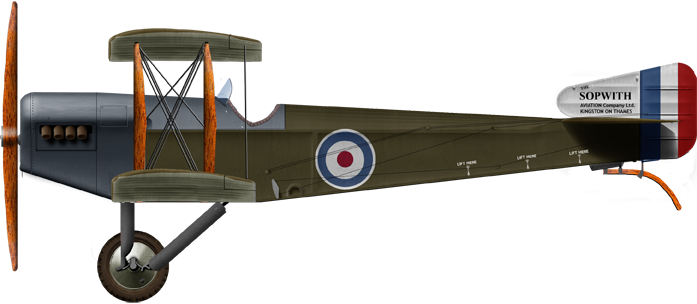
Early preserie Cuckoo T.1
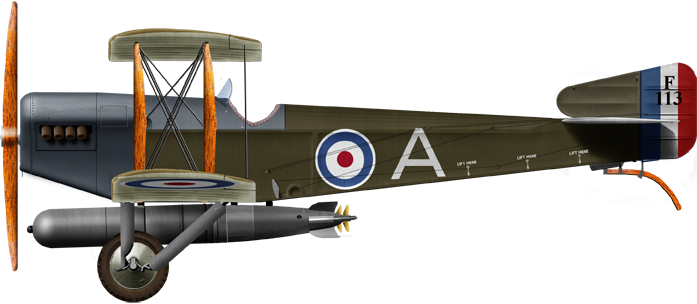
Operational RAF Cuckoo with torpedo, 1918
Photos



- Lohner E (1913)
- Macchi M3 (1916)
- Macchi M5 (1918)
- Ansaldo ISVA (1918)
- Sopwith Baby (1916)
- Short 184 (1916)
- Fairey Campania (1917)
- Sopwith Cuckoo (1917)
- Felixstowe F.2 (1917)
- Friedrichshafen FF 33 (1916)
- Albatros W4 (1916)
- Albatros W8 (1918)
- Hanriot HD.2
- Grigorovitch M5
- IJN Farman MF.7
- IJN Yokosho Type Mo
- Yokosho Rogou Kougata (1917)
- Yokosuka Igo-Ko (1920)
- Curtiss N9 (1916)
- Aeromarine 39
- Vought VE-7
- Douglas DT (1921)
- Boeing FB.5 (1923)
- Boeing F4B (1928)
- Vought O2U/O3U Corsair (1928)
- Blackburn Blackburn (1922)
- Supermarine Seagull (1922)
- Blackburn Ripon (1926)
- Fairey IIIF (1927)
- Fairey Seal (1930)
- LGL-32 C.1 (1927)
- Caspar U1 (1921)
- Dornier Do J Wal (1922)
- Rohrbach R-III (1924)
- Mitsubishi 1MF (1923)
- Mitsubishi B1M (1923)
- Yokosuka E1Y (1923)
- Nakajima A1N (1927)
- Nakajima E2N (1927)
- Mitsubishi B2M (1927)
- Nakajima A4N (1929)
- CANT 18
WW1
✠ K.u.K. Seefliegerkorps:
 Italian Naval Aviation
Italian Naval Aviation
 RNAS
RNAS
 Marineflieger
Marineflieger
 French Naval Aviation
French Naval Aviation
 Russian Naval Aviation
Russian Naval Aviation
 IJN Air Service
IJN Air Service
 USA
USA
Interwar
 Interwar US
Interwar US
 Interwar Britain
Interwar Britain
 Interwar France
Interwar France
 Interwar Germany
Interwar Germany
 Interwar Japan
Interwar Japan
 Interwar Italy
Interwar Italy
- Curtiss SOC seagull (1934)
- Grumman FF (1931)
- Curtiss F11C Goshawk (1932)
- Grumman F2F (1933)
- Grumman F3F (1935)
- Northrop BT-1 (1935)
- Grumman J2F Duck (1936)
- Consolidated PBY Catalina (1935)
- Brewster/NAF SBN-1 (1936)
- Curtiss SBC Helldiver (1936)
- Vought SB2U Vindicator (1936)
- Brewster F2A Buffalo (1937)
- Douglas TBD Devastator (1937)
- Vought Kingfisher (1938)
- Curtiss SO3C Seamew (1939)
- Douglas SBD Dauntless (1939)
- Grumman F4F Wildcat (1940)
- F4U Corsair (NE) (1940)
- Brewster SB2A Buccaneer (1941)
- Grumman TBF/TBM Avenger (1941)
- Consolidated TBY Sea Wolf (1941)
- Grumman F6F Hellcat (1942)
- Curtiss SB2C Helldiver (1942)
- Curtiss SC Seahawk (1944)
- Grumman F8F Bearcat (1944)
- Ryan FR-1 Fireball (1944)
- Douglas AD-1 Skyraider (1945)
Fleet Air Arm
- Fairey Swordfish (1934)
- Blackburn Shark (1934)
- Supermarine Walrus (1936)
- Fairey Seafox (1936)
- Blackburn Skua (1937)
- Short Sunderland (1937)
- Blackburn Roc (1938)
- Fairey Albacore (1940)
- Fairey Fulmar (1940)
- Grumman Martlet (1941)
- Hawker sea Hurricane (1941)
- Brewster Bermuda (1942)
- Fairey Barracuda (1943)
- Fairey Firefly (1943)
- Grumman Tarpon (1943)
- Grumman Gannet (1943)
- Supermarine seafire (1943)
- Blackburn Firebrand (1944)
- Hawker Sea Fury (1944)
IJN aviation
- Aichi D1A "Susie" (1934)
- Mitsubishi A5M "Claude" (1935)
- Nakajima A4N (1935)
- Yokosuka B4Y "Jean" (1935)
- Mitsubishi G3M "Nell" (1935)
- Nakajima E8N "Dave" (1935)
- Kawanishi E7K "Alf" (1935)
- Nakajima B5N "Kate" (1937)
- Kawanishi H6K "Mavis" (1938)
- Aichi D3A "Val" (1940)
- Mitsubishi A6M "zeke" (1940)
- Nakajima E14Y "Glen" (1941)
- Nakajima B6N "Jill" (1941)
- Mitsubishi F1M "pete" (1941)
- Aichi E13A Reisu "Jake" (1941)
- Kawanishi E15K Shiun "Norm" (1941)
- Nakajima C6N Saiun "Myrt" (1942)
- Yokosuka D4Y "Judy" (1942)
- Kyushu Q1W Tokai "Lorna" (1944)
Luftwaffe
- Arado 196 (1937)
- Me109 T (1938)
- Blohm & Voss 138 Seedrache (1940)
Italian Aviation
- Savoia-Marchetti S.55
- IMAM Ro.43/44
- CANT Z.501 Gabbiano
- CANT Z.506 Airone
- CANT Z.508
- CANT Z.511
French Aeronavale
- GL.300 (1926-39)
- Levasseur PL.5 (1927)
- Potez 452 (1935)
- Loire 210 (1936)
- Loire 130 (1937)
- LN 401 (1938)
Soviet Naval Aviation
- Shavrov SH-2 (1928)
- Tupolev TB-1P (1931)
- Beriev MBR-2 (1930)
- Tupolev MR-6 (1933)
- Tupolev MTB-1 (1934)
- Beriev Be-2 (1936)
- Polikarpov I16 naval (1936)
- Tupolev MTB-2 (1937)
- Ilyushine DB-3T/TP (1937)
- Beriev Be-4 (1940)
-
Skoda Š-328V
R-XIII Idro
Fokker C.XI W (1934)
WW2
- De Havilland Sea Vixen
- Hawker Sea Hawk
- Supermarine Scimitar
- Blackburn Buccaneer
- Hawker Sea Harrier
- Douglas A4 Skyhawk
- Grumman F9F Panther
- Vought F8 Crusader
- McDonnell-Douglas F-4 Phantom-II
- North Am. A5 Vigilante
- TU-142
- Yak 38 forger
☢ Cold War
✧ NATO
 Fleet Air Arm
Fleet Air Arm
 US Navy
US Navy
☭ Warsaw Pact
Merch
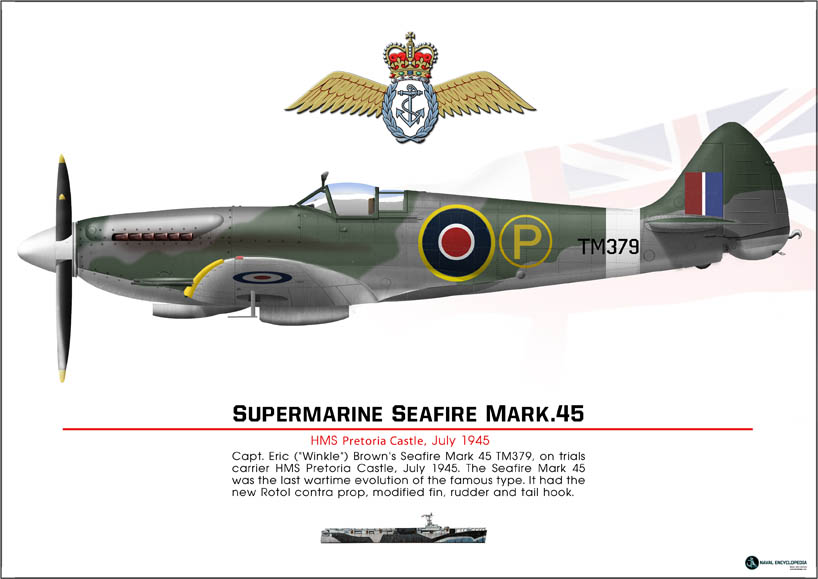
Seafire Mark 45; HMS Pretoria Castle
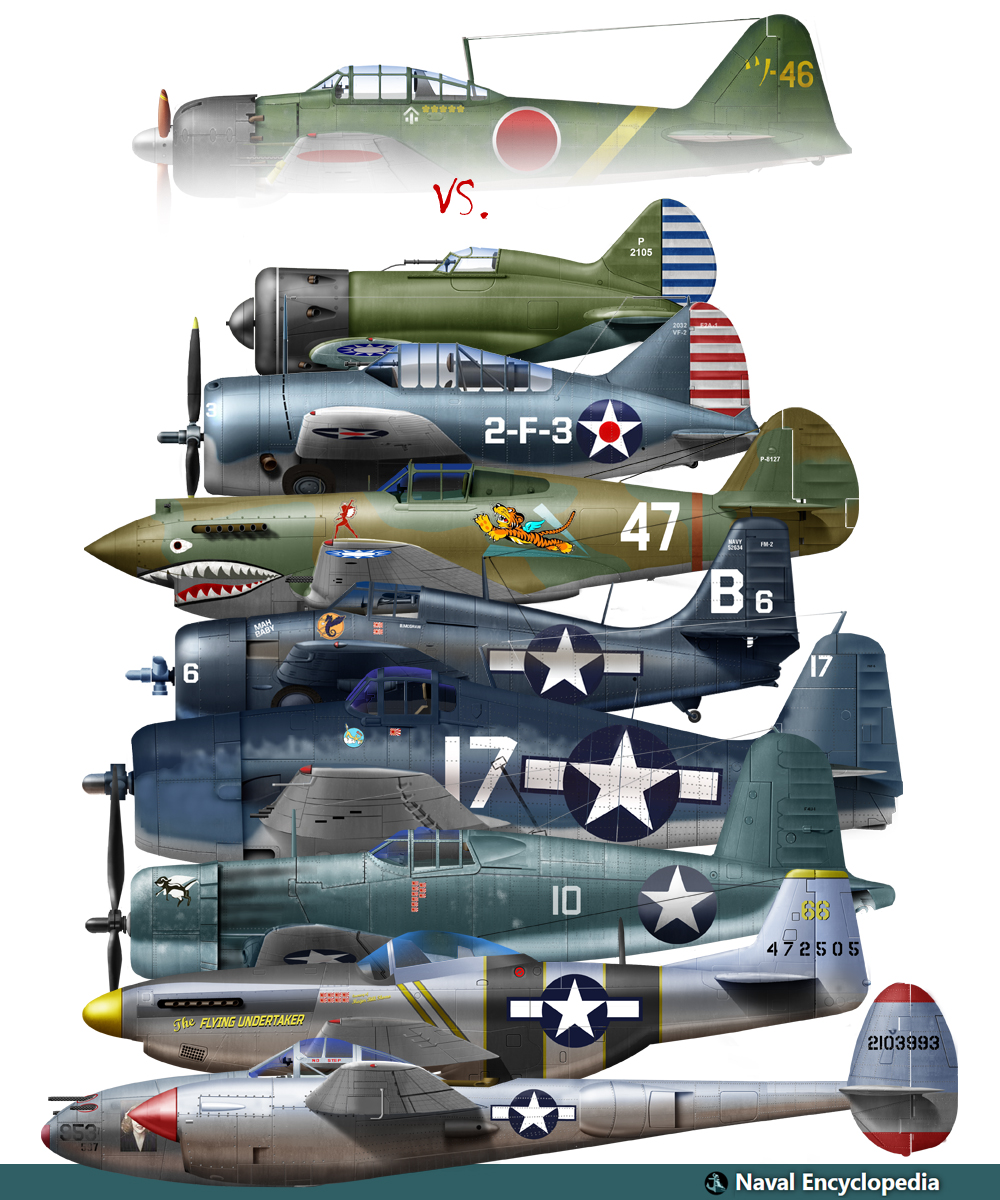
Zeros vs its aversaries
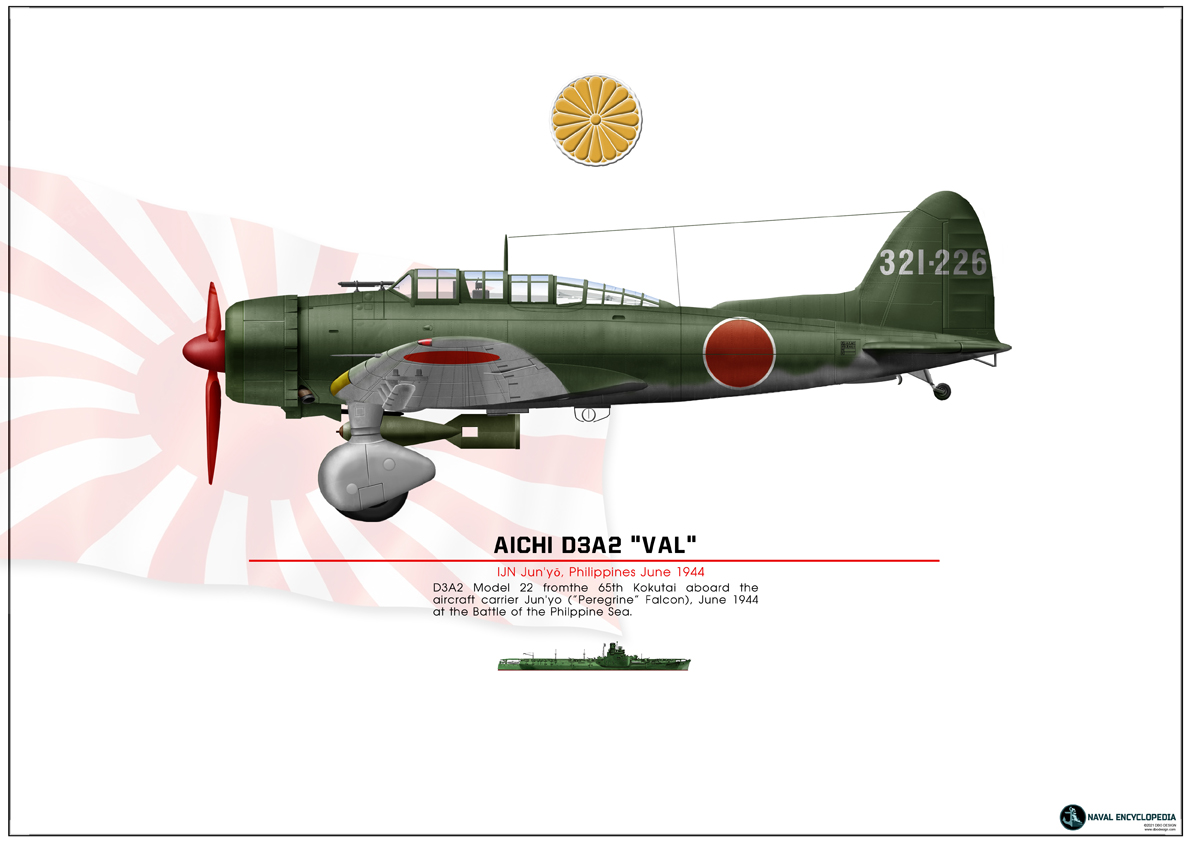
Aichi D3A “Val” Junyo
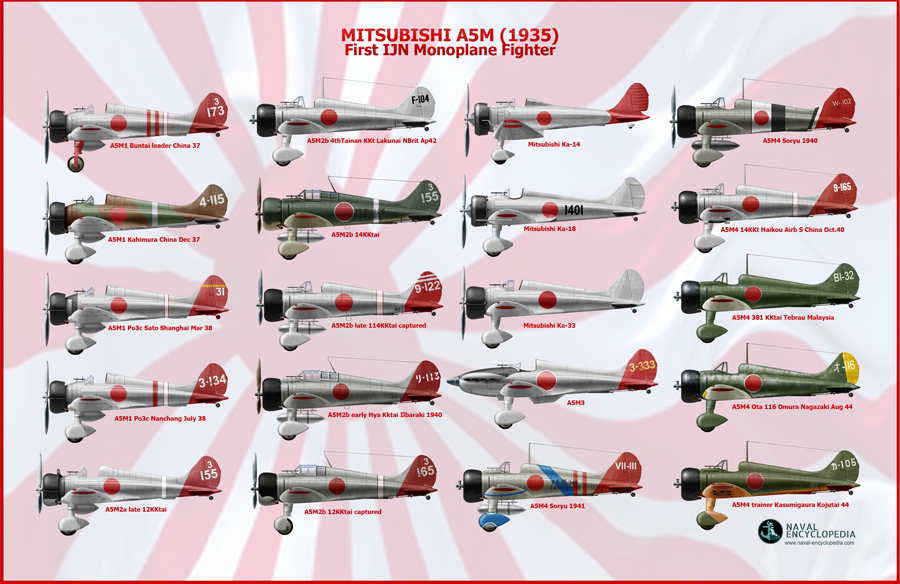
Mitsubishi A5M poster
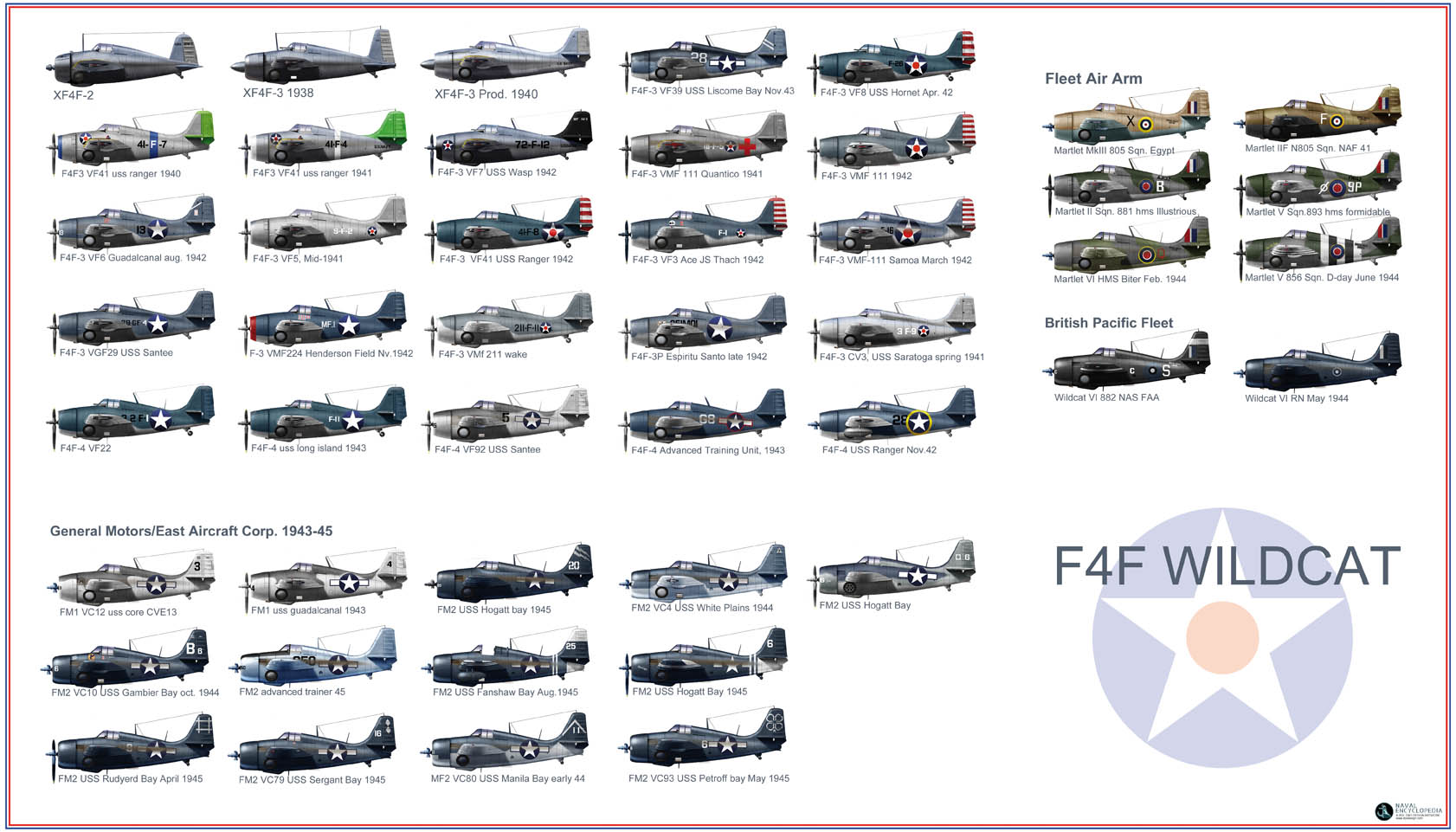
F4F wildcat
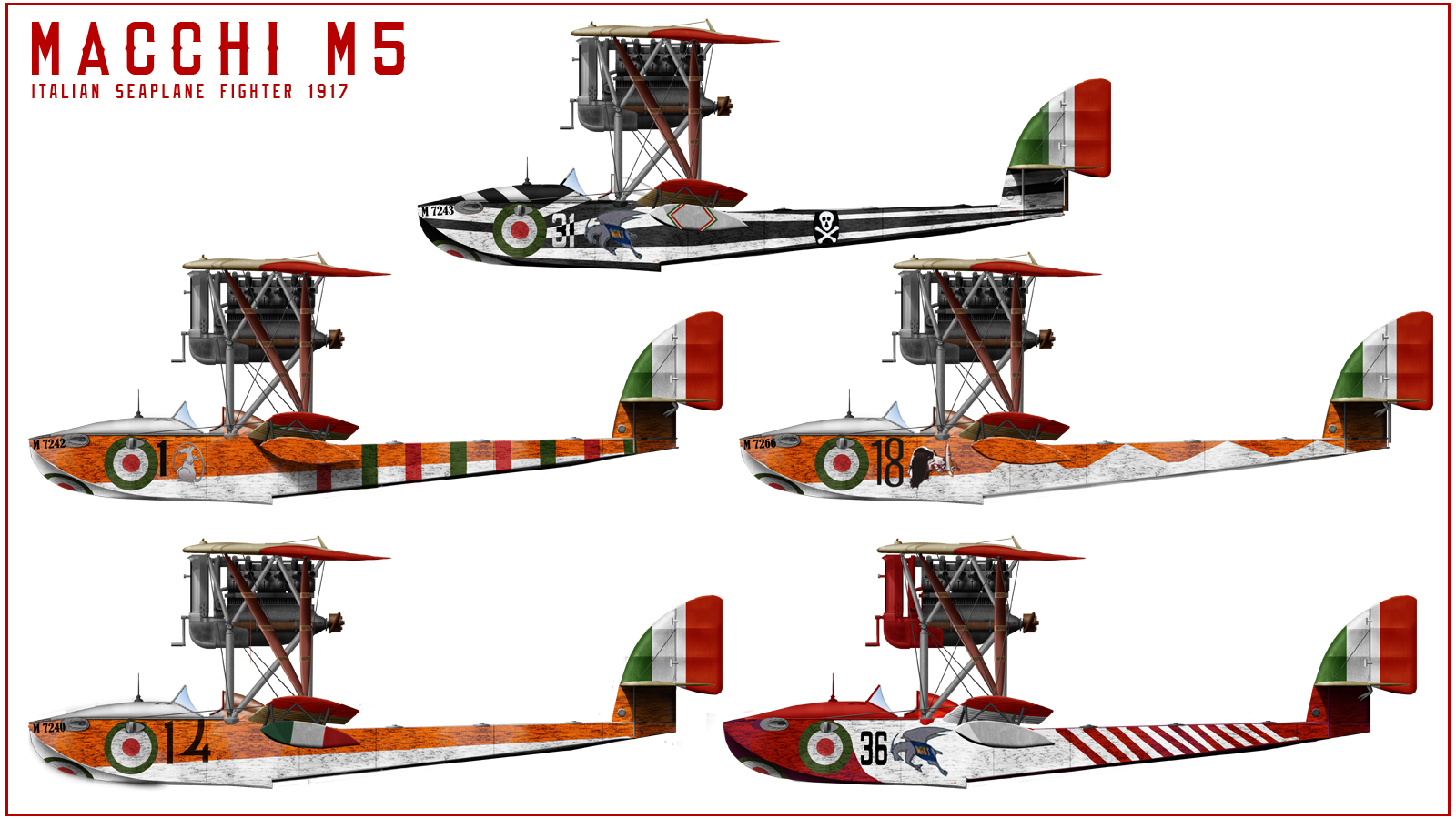
Macchi M5
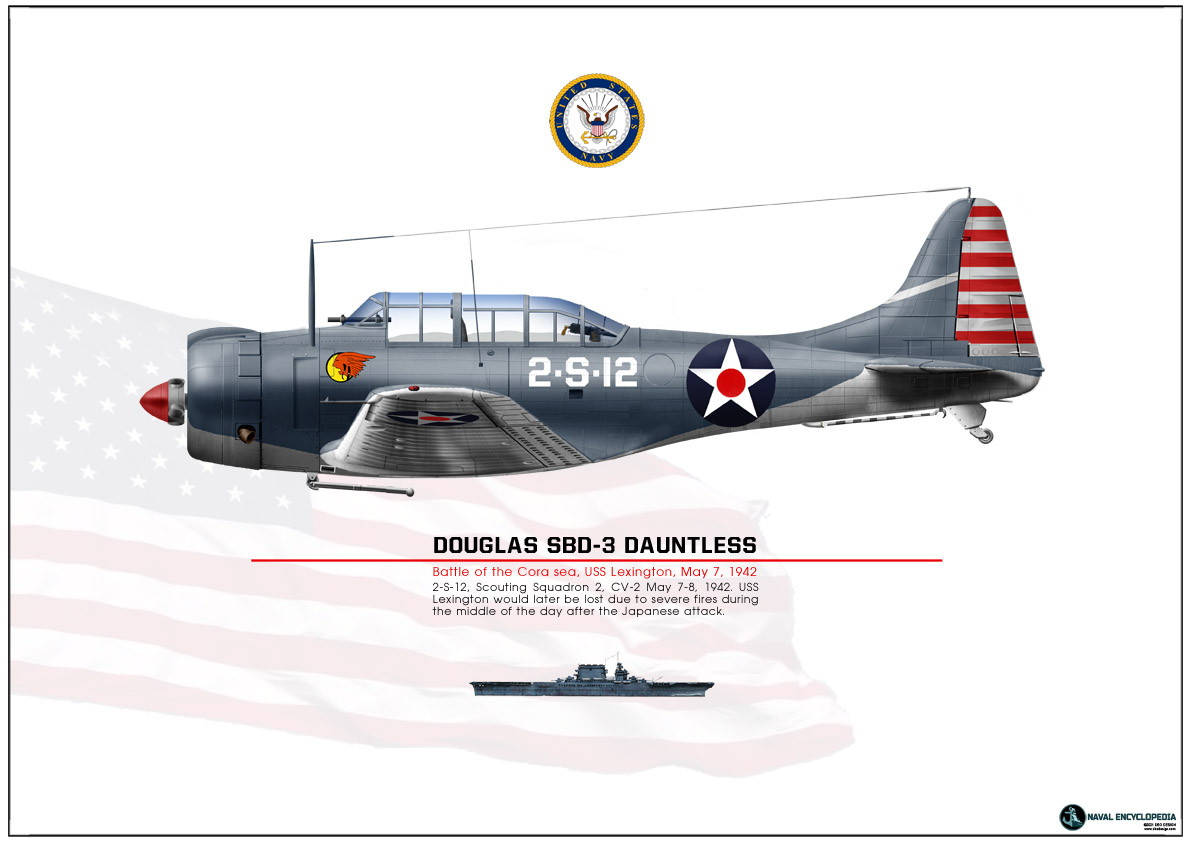
SBD Dauntless Coral Sea
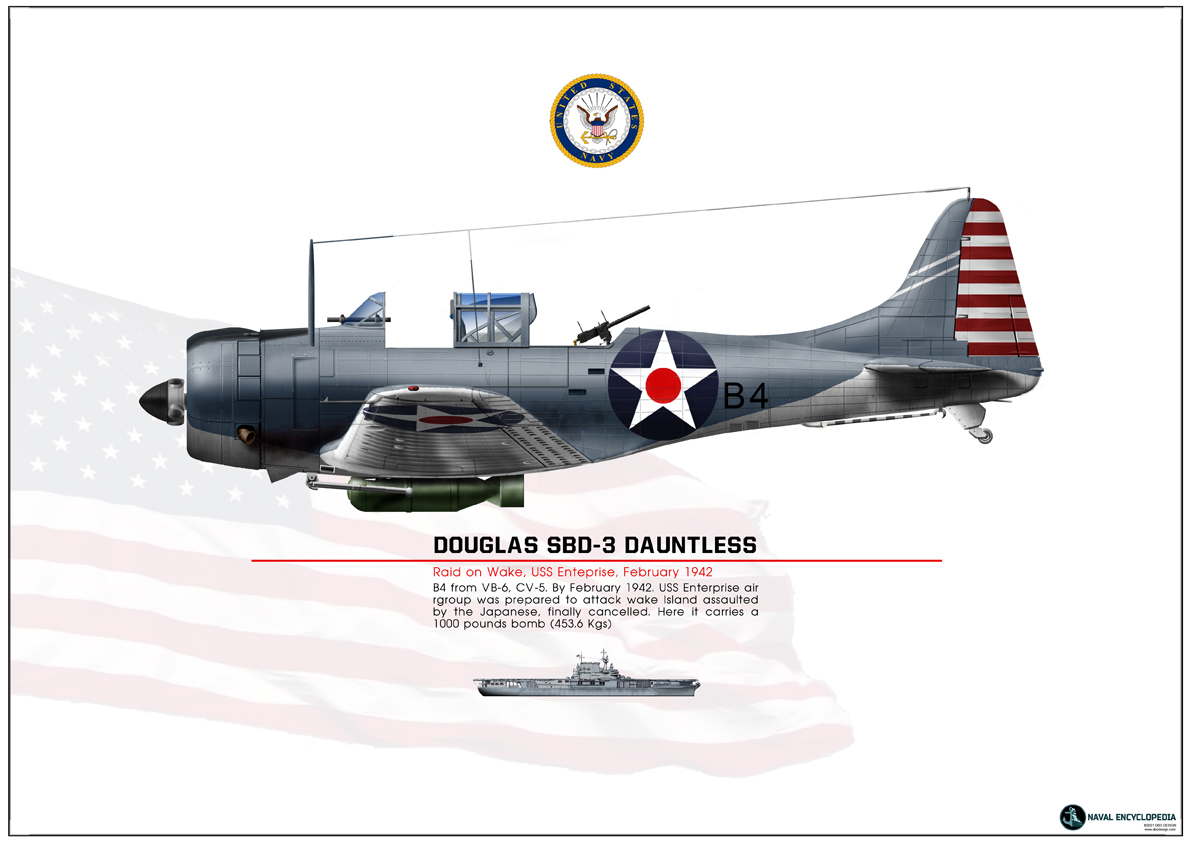
SBD Dauntless USS Enterprise
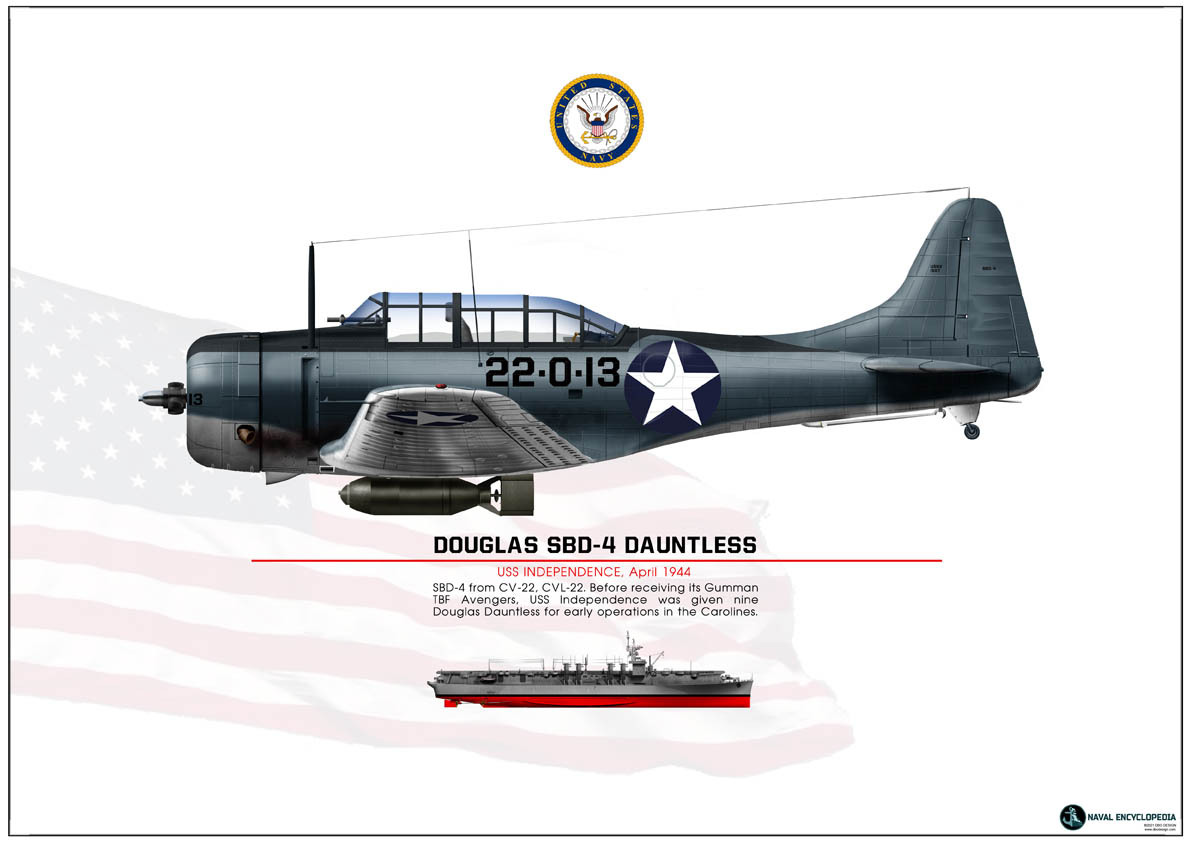
SBD-4 CV22